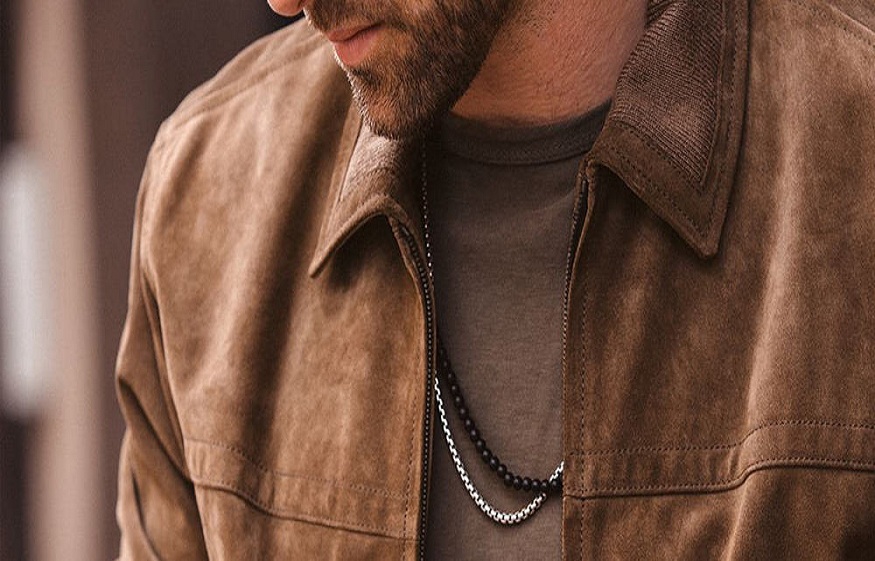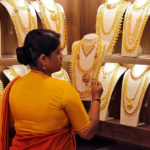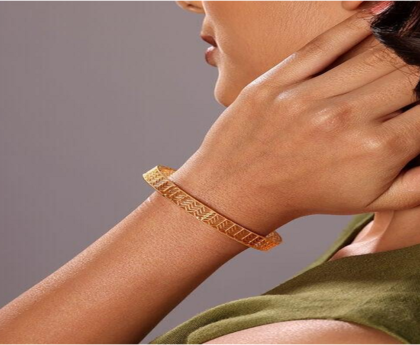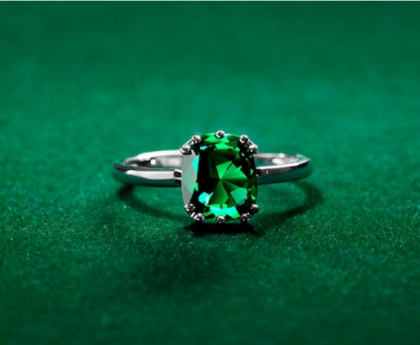Well, this article aims to change your mind . Vast project I agree, but I will do my best.
And for insiders, you will surely find in these few lines, inspiration or information that can help you in your search for the perfect accessory.
NB: I will not mention watches here because previous articles are dedicated to them.
Karl Lagarfeld wrist jewelry
It’s beautiful, it goes with everything and it can save your style. Good is not Karl who wants, it’s true!
I’ll tell you a secret: I myself am a recent convert. Amateur of clothing experiments, I was less so when it comes to accessories. Recently, and thanks to the kindness of my fabulous friends at BonneGueule (thanks again to you), I acquired my first silver bracelet. Cold at first, I started wearing it, getting used to it, letting myself be seduced…
I therefore bought new jewelry: bracelets, rings (soon necklace?), fascinated by their design, the techniques of creation, the symbolism they express. Because indeed, I believe that, even more than clothes, jewelry conveys an aura that is completely unique to the wearer.
JEWELRY AND MEN
Men’s jewelry has not always been taboo. History testifies to a certain infatuation of the male sex for ornaments and finery, sometimes even more demonstrative than among women.
Everywhere and for a long time, from Antiquity to the Renaissance, passing through the Middle Ages, men wore jewelry – sometimes very conspicuous – to assert their social status with their peers.
In ancient Egypt, all men wore jewelry. The most modest contented themselves with small amulets while the richest wore voluminous ornaments on the chest, rings (sometimes several on each finger) or cuffs in gold and various jewels (turquoise from Sinai, lapis lazuli from Afghanistan).
The less extravagant Romans, however, used to wear precious rings, breastplates and necklaces. Some jewelry could signify military affiliation.
Fermail from the Middle Ages
Example of a clasp from the Middle Ages: a true work of goldsmith, this improved pin was in frequent use at that time.
From the Middle Ages to the Renaissance , each period was marked by a particular practice of ornament, both among men and among women.. However, it was customary to wear jewelry on clothing rather than on oneself. This period saw the democratization of the clasp, also called clasp, a sort of brooch used to hold the two sides of the cape or coat.
Depending on the era, they represented flowers, animals or even mottos or coats of arms. If the most powerful ecclesiastical castes always had the habit of wearing jewelry (large gold crosses, various hierarchical rings), the laity for their part followed the fashion of the time, often dictated by royalty.
Some sovereigns like Louis IX (very pious, also known as Saint Louis) were quite reluctant to all forms of pomp, while other kings, like Charles VI were much more fond of this kind of frivolity.
Nose ornament from Western India
Nose ornament from Western India worn by an Indian prince, between 1925 and 1950: gold, diamonds, pearls and emeralds. So where do we draw the line between feminine and masculine? Photo from the exhibition “Des Grands Moghols aux Maharajahs” at the Grand Palais.
India is another striking example of a culture that promoted the wearing of jewelry among men. Indeed, the jewelery sector will flourish there from the 14th century, at the time of the Great Mughals who personally finance this economy. These creations are among the most successful at the time, India enjoying a particular know-how in the matter as well as deposits conducive to the production of luxurious jewellery.
The emperors and the local nobility adorn themselves with turban decorations, bracelets, necklaces, rings and other ornaments in gold and precious stones. The 19th century and the advent of the British Raj (the establishment of the British colonial regime) will be a second era of great splendor for Indian fine jewelry.
The Indian princes, stripped of all power, will continue to assert their influence through ever more sumptuous ornaments, mixing Indian tradition and Western influence.
film extract “The Adornment”
Excerpt from the film “La Parure” taken from the eponymous short story by Maupassant, telling the story of a couple going into debt for life after losing a diamond river borrowed during a social evening.
Height of machismo, one prefers to offer his wife luxurious pieces of jewelry to then expose his success and his fortune in society.
Synonymous with wealth and therefore power, jewelry has always had a strong social value. More so, they were considered mystical objects, mostly associated with magical powers or supposed esoteric properties. Whether it’s the culture of the symbol or the power of stones, there are many beliefs related to jewelry…
THE JEWEL FOR ALL
Of course, this does not have the value of a representative sample of the population but can all the same provide some elements of answers.
To the question “why don’t you wear jewelry?” I was often told: too connoted, too feminine, flashy or worse , “not for me” . Simple but pithy as an answer. Does this mean that some men are born to wear jewelry and some are not?
Finally, and as always, jewelry is associated with social considerations that are firmly rooted in our heads, with an imagery that is as old as it is outdated.
Symbol of power and wealth, the jewel is exclusive. Almost banned from the men’s wardrobe for more than two centuries (and reserved for women), it is feminine and therefore sexually connoted.
Johnny Depp wearing jewelry
Wearing jewelry does not necessarily mean losing your manhood, like Johnny Depp here.
Yet today, these psychological barriers tend to disappear. There is a growing resurgence of men’s interest in jewelry, and as gender considerations crumble, many designers are entering the burgeoning men’s jewelry market. And believe me, this trend is only in its infancy!
THE DIFFERENT JEWELRY FOR MEN
Of course, certain indications will eventually have to be respected to avoid turning into a real Christmas tree or a sad replica of Puff Daddy…
Jewels are accessories of no practical use. Their only interest therefore lies in what they say about you, about your personality. Wearing jewelry is choosing to express something special, deep.
Besides, there is not really a jewelry fashion. When there are a few currents, most often they run out to quickly become anachronistic or even tacky.





